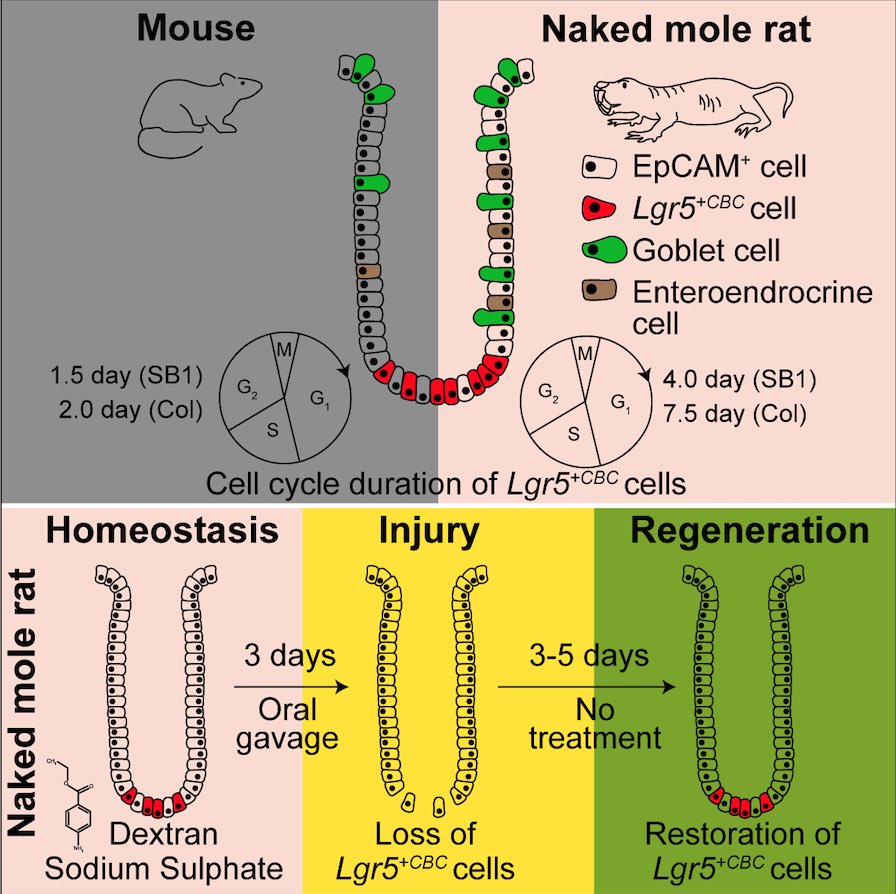How do naked mole rats maintain disease-free tissue for 30+ years?
Updated On Dec 20, 2023
Adult stem cell activity in naked mole rats for long-term tissue maintenance
(Published in Nature Communications, December 2023)
The naked mole rat (NMR), Heterocephalus glaber, the longest-living rodent, provides a unique opportunity to explore how evolution has shaped adult stem cell (ASC) activity with increasing lifespan. Using cumulative BrdU labelling and a quantitative imaging approach to track intestinal ASCs (Lgr5+) in NMRs over time in their native in vivo state, we show adaptations to living in near-anaerobic, food-deprived subterranean environment, has necessitated an expanded pool of Lgr5+ cells, which exhibit slower division rates compared to short-lived mice, but have similar turnover as humans. Unlike human LGR5+ cells at the crypt base (LGR5+CBC) that slow down their division rates by entering quiescence(G0), NMR Lgr5+CBC cells in both the small intestine and the colon transit slowly through the active cell cycle (G1 to M) by prolonging arrest at G1 and/or G2. The inverse correlation between ASC division rates and lifespan appears to be specific to Lgr5+CBC/LGR5+CBC cells as this relationship is not seen for cells outside the crypt base. Our data provide an explanation for the observed anticorrelation between somatic mutation rates and longevity in mammals, with ASC lineages in longer-lived organisms turning over slowly to possibly mitigate ASC exhaustion and reduce mutation rates for long-term tissue maintenance. Finally, we also observe an expanded pool of differentiated cells in NMRs that confer enhanced protection and function to the intestinal mucosa which is able to detect any chemical imbalance in the luminal environment efficiently, triggering a robust anti-proliferative, pro-apoptotic response within the stem cell zone.
